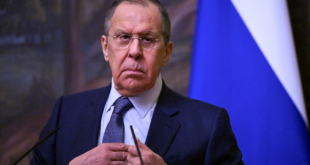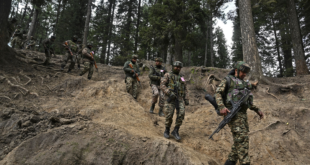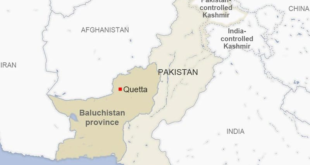On September 7, 2021, hundreds of Afghans – most of whom were women defying the Taliban jihadis patrolling public life in Afghanistan – turned out in the streets of Kabul chanting anti-Pakistan, anti-Taliban slogans. Some of the slogans raised by the protesters included: “Pakistan, Pakistan, Leave Afghanistan” and “Freedom, Freedom.”[1] The women protesters – chanting “Death to Pakistan,” “Allah-o-Akbar,” “Freedom,” and “We do not want captivity” – demanded the closure of the Pakistan Embassy in Kabul.[2] The first of these protests was led by a group of Afghan women who demonstrated in front of the Pakistan Embassy in Kabul and were joined by men, according to an Afghan media report.[3]
The anti-Pakistan protests, which were held in Herat and other cities, reflect a deeply buried understanding among Afghans that it was the Pakistani military’s Inter-Services Intelligence (ISI) that planned and engineered a long-running bloodshed in Afghanistan that has gone on for the past four decades by aiding and nurturing the current Afghan Taliban leaders after 9/11 and their predecessors, with American and Saudi aid, during the 1980s.
In this context, the visit of Inter-Services Intelligence (ISI) chief Lt.-Gen. Faiz Hameed to Kabul on September 4 seems to have come as a reminder to Afghans that Pakistan is the new invader of Afghanistan through its proxy: the Islamic Emirate, the Afghan Taliban organization that America courted over the past few years, ultimately helping the jihadist organization to recapture power on August 15, 2021.[4] Lt.-Gen. Faiz Hameed visited Kabul to mentor the Afghan Taliban leaders on forming a government that is to Pakistan’s liking. Pakistani ISI is known as the creator and nurturer of jihadi terror organizations in Pakistan and its surrounding region: Afghanistan and Kashmir.
The ISI played “a direct role” in a major terror attack on the U.S. Embassy in Kabul.[5] Testifying before the U.S. Senate Armed Services Committee in 2011, Adm. Mike Mullen, then chairman of the Joint Chiefs of Staff, noted that the ISI used the Haqqani Network of the Afghan Taliban to attack the U.S. Embassy, saying: “The Haqqani network acts as a veritable arm of Pakistan’s Inter-Services Intelligence agency.”[6] Adm. Mullen added: “We also have credible evidence that they were behind the June 28th attack against the Intercontinental Hotel in Kabul and a host of other smaller but effective operations.”[7]
As expected, Sirajuddin Haqqani, the chief of the Haqqani Network of the Islamic Emirate, was appointed acting interior minister of Afghanistan on September 7, the day anti-Pakistan protests erupted in Kabul.[8] ISI has always protected Sirajuddin Haqqani, whose father Jalaluddin Haqqani founded the Haqqani Network.
As of September 8, the FBI website lists Sirajuddin Haqqani, the new interior minister of the Taliban government in Afghanistan, among its Most Wanted Terrorists.[9] The FBI notes: “Sirajuddin Haqqani is wanted for questioning in connection with the January 2008 attack on a hotel in Kabul, Afghanistan, that killed six people, including an American citizen. He is believed to have coordinated and participated in cross-border attacks against United States and coalition forces in Afghanistan. Haqqani also allegedly was involved in the planning of the assassination attempt on Afghan President Hamid Karzai in 2008.”[10]
Sometime in February 2021, Sirajuddin Haqqani, the Afghan Taliban’s operational chief and major terror mastermind, delivered a major speech to a gathering of jihadi terror commanders where he, fearing that the U.S. could rescind the Doha agreement, issued a sharp warning to America:[11] “[After 9/11] we fought them with faith and with weaker military strength. Today we have both. We have the technology to use drones, we have our own missiles. This time if the mujahideen resume fighting, it would be something they have never seen before. They will wish the battlefield was like in the past,” Sirajuddin Haqqani said.[12]
Afghans are now realizing that the Haqqani Network, which is the most influential jihadi unit of the Islamic Emirate, is a proxy through which Pakistan will once again rule over Afghanistan. This realization is behind the eruption of anti-Pakistan protests that the Afghan Taliban, whom former Pakistani Prime Minister Benazir Bhutto once described as “our children,” are trying to curb in Afghanistan. Also, on September 7, the Afghan Taliban, befitting their jihadi mindset and ideology, abolished the Ministry of Women’s Affairs as they announced the formation of a new government. After seizing power in Kabul, the Afghan Taliban promised to give rights to women, minorities, and the media. But when the protests began on September 7, the Taliban’s armed jihadi fighters stopped journalists from filming.
According to a report, ToloNews cameraperson Wahid Ahmadi was detained and his camera was confiscated.[13] The Taliban’s jihadi forces beat up four Afghan journalists and cameramen, according to another report.[14] Sami Jayesh, a reporter for Ariana News, was detained and taken to an unknown place by the Taliban while he was reporting the protests in Kabul, journalist Shafi Karimi tweeted.[15] A media report also noted that despite the Taliban jihadis’ restrictions, women still protested and chanted slogans against Pakistan while many protestors were detained by the Taliban.[16]
Speaking of the Taliban’s crackdown on anti-Pakistan protesters, journalist Bilal Sarwary tweeted: “Taliban do face a socially transformed, rather connected and highly aware Afghanistan. Demonstrations in Kabul under Taliban Afghanistan becoming widespread by the day. The demonstrators are upset by the recent visit [of the ISI chief to Kabul] and Pakistan’s interference in Afghanistan.”[17] Journalist Nadia Momand, demanding that the international community impose global sanctions on Pakistan, tweeted: “Pakistan seeks to impose a government made of a bunch of Mullahs [radical Islamic clerics] from the Pakistani madrassas. Afghans will never accept that. Taliban is a terrorist group and not capable of running modern Afghanistan. #FreeAfghanistan #SanctionPakistan.”[18]
Not many people know that the women of Afghanistan were first granted the right to vote not by America, but by the Afghan government in 1964. It is apt that many women, nurtured in the culture of democratic values that has been reinforced especially during the past two decades of American occupation, were among the protesters who turned out in the streets of Kabul on September 7.[19]
Ever since the Islamic Emirate seized power in Kabul on August 15, Afghans have protested the Taliban, especially fearing that women’s rights could be curbed at any time. The anti-Pakistan protests on September 7 erupted around the time Ahmad Massoud, the leader of the National Resistance Front (NRF) of Afghanistan in Panjshir Valley, released an audio recording calling on the people of Afghanistan to revolt against the Taliban.[20]
 Eurasia Press & News
Eurasia Press & News



